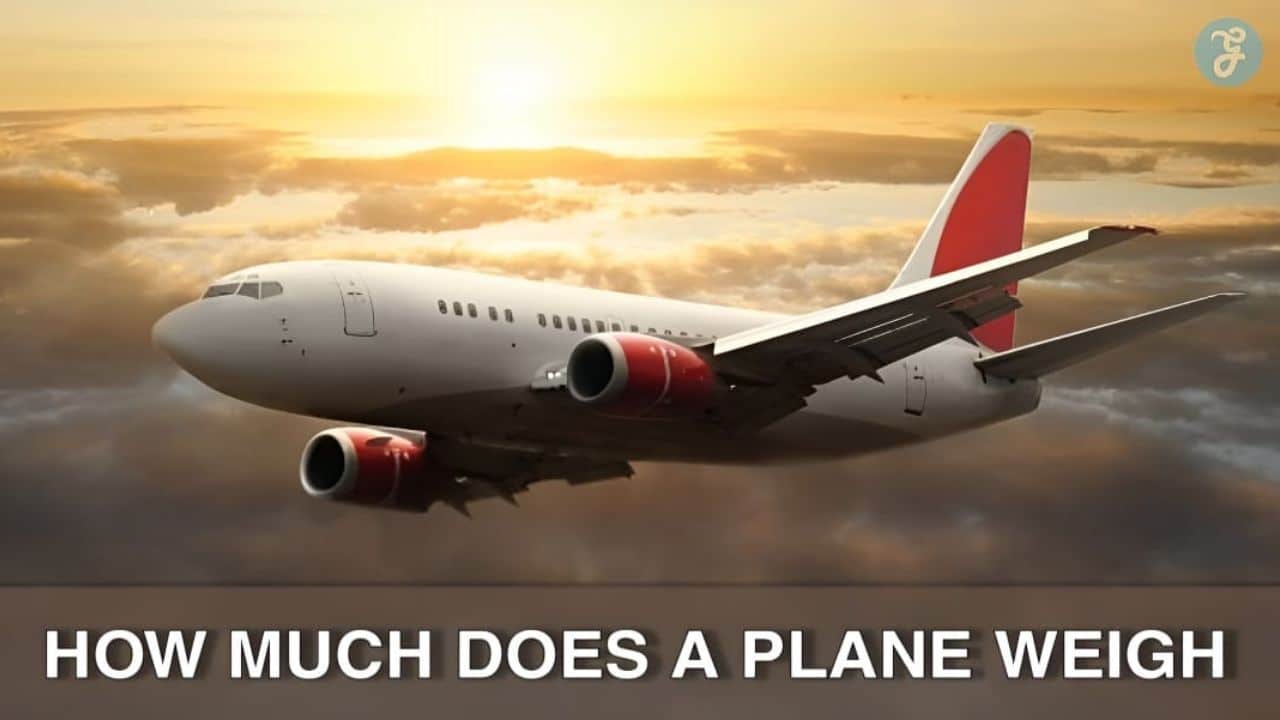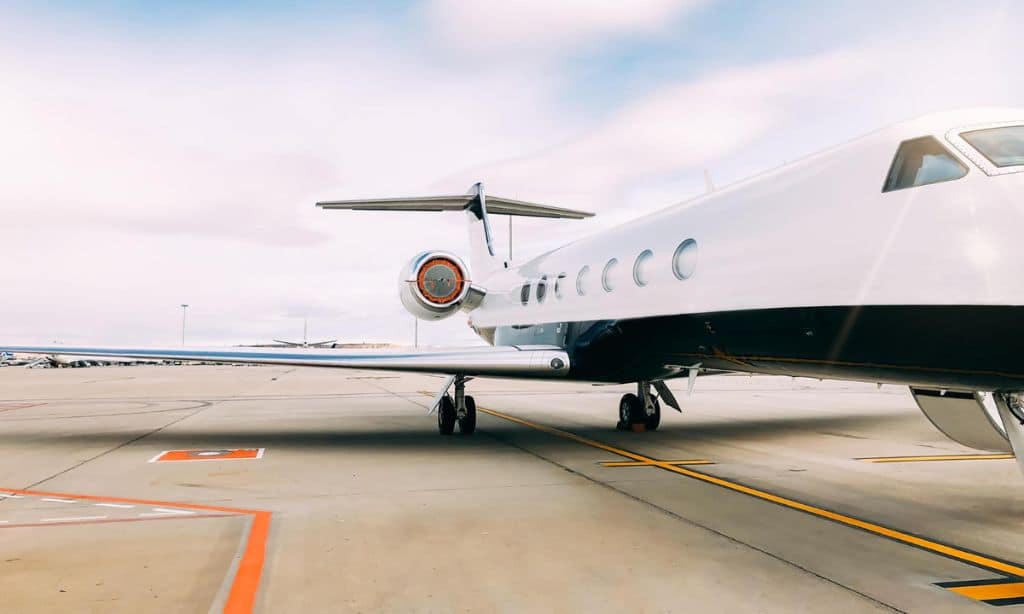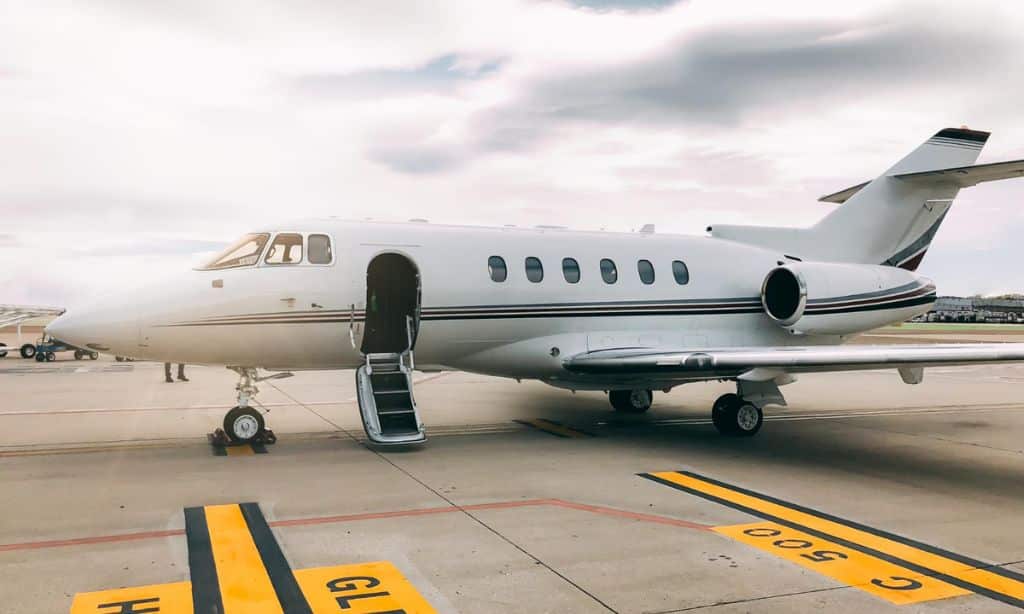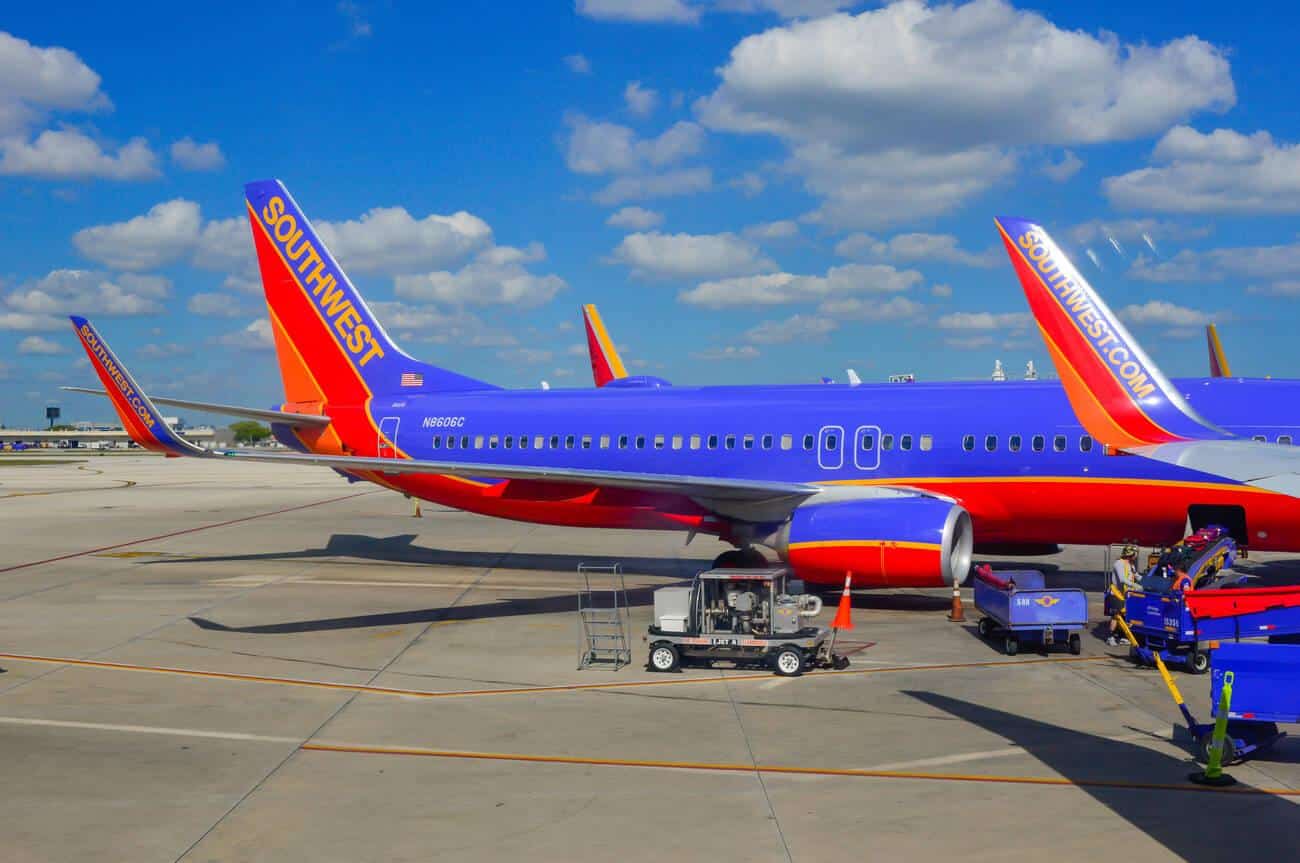Are you curious about how much does a plane weighs? It’s hard to imagine that a machine as large and heavy as an aircraft can fly in the sky effortlessly! In fact, the average commercial airliner weighs around 70 tons, including passengers, crew, luggage, and fuel.
This blog post breaks down all you need to understand about how much a plane weighs – from small personal ones right up to mammoth commercial jets. Ready for take-off? Let’s go explore this intriguing world of aviation weights!
Content Highlights
- The average weight of a commercial airliner, including passengers, crew, luggage, and fuel, is around 70 tons or 155,000 pounds.
- Aircraft weight is important as it affects various aspects of airplane operations and capabilities.
- Factors such as fuel, passengers, and cargo contribute to the overall weight of an aircraft.
- Commercial airplanes can be categorized into small (up to 19,000 pounds), medium-sized (around 90,000 pounds), and large (between 337,100 to 485.300 pounds) based on their weight.
Understanding Aircraft Weight
Aircraft weight is important to understand as it affects various aspects of airplane operations and capabilities.
Understanding aircraft weight is important for a number of reasons, including:
- Safety: Aircraft must be loaded within their weight and balance limits in order to fly safely. If the aircraft is too heavy or its weight is not properly distributed, it can be difficult to control and could even crash.
- Performance: Aircraft weight affects performance factors such as takeoff distance, climb rate, and fuel consumption. A heavier aircraft will require more runway to take off and will burn more fuel.
- Cost: Aircraft weight can also affect operating costs. For example, a heavier aircraft will require more fuel, which can increase the cost of each flight.
Some of the most important factors to understand aircraft weight include:
- Maximum takeoff weight (MTOW): This is the maximum weight at which an aircraft is certified to take off. The MTOW is determined by a number of factors, including the aircraft’s structural strength, engine power, and wing design.
- Maximum landing weight (MLW): This is the maximum weight at which an aircraft is certified to land. The MLW is typically less than the MTOW because the aircraft must have enough fuel to reach its destination and to have a safety margin in case of bad weather or other unexpected events.
- Center of gravity (CG): This is the point at which the entire weight of the aircraft is assumed to be concentrated. The CG must be located within certain limits for the aircraft to fly safely. The aircraft will be difficult to control if the CG is too far forward or too far aft.
- Weight and balance limits: Aircraft have weight and balance limits for each axis (longitudinal, lateral, and vertical). These limits ensure the aircraft is properly balanced and the CG remains within the safe envelope.
Aircraft Empty Weight (AEW)
The Aircraft Empty Weight, or AEW, is made up of many parts. It includes the weight of the plane’s main body, called the airframe, engines, and fixed gear. Things like leftover fuel in the tank, undrainable oil, and hydraulic fluid also count in AEW.
Even though these seem small, they add to a plane’s empty weight. The pilot needs to know this figure before any flight can happen. With this knowledge, they ensure the aircraft is not carrying too much for takeoff.
This balance helps keep everyone safe during the flight!
Maximum Gross Takeoff Weight (MGTW)
The Maximum Gross Takeoff Weight (MGTW) tells us the heaviest a plane can be to take off. This weight is given by the people who make the plane and is in its papers. Different types of planes have different MGTW.
It’s unsafe if a plane weighs more than its MGTW when it takes off. This extra weight can change how well the plane flies.
To keep a plane from being too heavy, you need good balance and to watch how much stuff goes on board. These include things like passengers and their bags, food for everyone onboard, fuel for the trip, etc..
So even with such high MGTWs, planes need careful control over what goes onto them each flight! Additionally, you can also read about- Airbus Seeks New Technology for 100% Hydrogen-Powered Aircraft
Useful Load
Useful load is the weight you can put on a plane. It changes how the plane works. The useful load includes things like fuel, people, and cargo. Not enough or too much weight causes issues for planes.
A good amount of weight makes a plane fly best.
Factors Affecting Aircraft Weight
Fuel, passengers, and cargo all contribute to the overall weight of an aircraft.
Fuel
Fuel is an important factor that affects the weight of an aircraft. The amount of fuel a plane carries can vary depending on factors like the distance it needs to fly and the number of passengers and cargo it carries.
Fuel consumption is associated with aircraft weight, so improper loading can impact how much fuel is used during a flight. This means that understanding how weight affects fuel consumption is crucial for efficient flight operations.
By properly managing fuel in relation to other factors affecting aircraft weight, airlines can optimize performance and minimize costs.
Passengers
Passengers play a role in the weight and balance of an aircraft during flight. Airlines sometimes weigh passengers on smaller planes to ensure the weight is evenly distributed. If there are issues with weight and balance, the airline may need to change seating arrangements or ask some passengers to leave their baggage behind.
A study found that 1.9% of flights had problems with weight and balance. So, how passengers are placed on the plane can affect how balanced it is during the flight.
Cargo
Cargo is an important factor that affects the weight of an aircraft. When cargo is loaded onto a plane, it adds to its overall weight. This can impact the performance and fuel efficiency of the aircraft.
In some cases, weight and balance considerations may require passengers to be moved or baggage to be bumped in order to keep the plane properly balanced. So, cargo plays a significant role in determining how much a plane weighs and how it operates during flight.
Read More: Boom Supersonic: The Future of Travel or Just a Pipe Dream?
Weight Categories of Commercial Airplanes
Commercial airplanes can be categorized into small, medium-sized, and large aircraft based on their weight. Find out more about the different weight categories and their significance in the aviation industry.
Read on to learn more!
Small Commercial Airplanes
Small commercial airplanes are the smaller ones used for short flights or regional travel. These planes can weigh up to 19,000 pounds when fully loaded with passengers, fuel, and cargo.
They are usually used by smaller airlines or for private charter services. Examples of small commercial airplanes include the Bombardier CRJ series and Embraer E-Jets. These planes are designed to carry a limited number of passengers, typically around 50 to 100 people.
Medium-Sized Commercial Airplanes
Medium-sized commercial airplanes are an important category in the world of aviation. These planes weigh around 90,000 pounds, making them smaller than large commercial airplanes but bigger than small ones.
As an example, let’s take a look at the Boeing 737-800, which is considered an average-sized airplane. It has a maximum takeoff weight of about 80,000 kg or 175,000 lbs. However, it’s essential to note that the weight of a medium-sized commercial airplane can still vary depending on factors like fuel load and passenger and cargo capacity.
So next time you see one of these planes in the sky or at the airport, you’ll better know how much they weigh!
Large Commercial Airplanes
Large commercial airplanes are the big ones that can carry lots of passengers and cargo. These planes weigh a whole lot, between 152.9 and 220.1 tons or 337,100 to 485,300 pounds! That’s really heavy! For example, a Boeing 737 can weigh anywhere from 132,000 to 187,000 pounds when it takes off.
So you can imagine how strong these planes must be to handle all that weight in the air!
Average Weights of Commercial Airplanes
Boeing aircraft weights range from 85,000 pounds to over one million pounds. Airbus aircraft weights range from 77,000 pounds to over one million pounds.
Examples of Boeing aircraft weights
To further understand the weight of commercial airplanes, let’s consider some popular models from Boeing. Here’s an overview of Boeing aircraft weights in a tabular format.
| Aircraft Model | Empty Weight (kg) | Empty Weight (lbs) |
|---|---|---|
| Boeing 737-800 | 41,145 | 90,710 |
| Boeing 747-400 | 412,300 | 910,509 |
| Boeing 777-300ER | 351,525 | 775,000 |
| Boeing 787-9 | 228,470 | 503,700 |
| Boeing 777X-9 | 269,070 | 593,200 |
Table: Aircraft Empty Weights for Different Boeing Aircrafts
As you can observe, the weight of an aircraft greatly differs according to the model. The Boeing 737-800, an average-sized airplane, has a maximum takeoff weight of about 42,000 kg (90,000 lbs), while the Boeing 747-400, also known as the “Jumbo Jet,” weighs significantly more, tipping the scales at a maximum takeoff weight of about 413,000 kg (911,000 lbs).
This substantial weight difference is due to the larger size and capacity of the 747 model, enabling it to carry more passengers and cargo. Even the weight of the paint applied to these airplanes can add an additional 600 to 1,200 pounds, further increasing the aircraft’s overall weight.
Remember, these weights are calculated when the fuel tank is full, as the weight of an airplane when its fuel tanks are empty is typically around 90,000 pounds (41,000 kilos).
Examples of Airbus aircraft weights
Airbus is a leading aircraft manufacturer that produces a range of aircraft with varying weights. Below is a table that provides examples of some of the different Airbus aircraft and their respective empty and maximum takeoff weights.
| Aircraft Model | Empty Weight (kg) | Maximum Takeoff Weight (kg) |
|---|---|---|
| Airbus A220-300 | 40,800 | 70,900 |
| Airbus A319neo | 46,200 | 75,500 |
| Airbus A320neo | 46,900 | 79,000 |
| Airbus A321neo | 50,100 | 93,400 |
| Airbus A330-200 | 119,900 | 242,000 |
| Airbus A330-300 | 125,900 | 233,000 |
| Airbus A350-900 | 129,700 | 280,000 |
| Airbus A350-1000 | 138,000 | 308,000 |
| Airbus A380-800 | 280,000 | 575,000 |
Table: Different Airbus and their Respective Empty and Maximum Takeoff Weights
These weights are averages and can vary based on modifications and specific configurations of each aircraft. It’s evident from the table that the Airbus A380-800 is the heaviest among the mentioned models, both in empty weight and maximum takeoff weight.
Weight of Personal Airplanes
Personal airplanes come in various sizes, with small ones typically weighing around 1,000 to 2,000 pounds.
Small personal airplanes
Small personal airplanes are a popular choice for individuals who enjoy flying. These planes are relatively lightweight, with most small personal airplanes having a maximum takeoff weight of around 19,000 pounds.
For example, the Cessna 172, which is one of the most commonly used small personal airplanes, weighs approximately 2,400 pounds. Despite their smaller size and weight compared to commercial aircraft or fighter jets, these planes still provide an exciting and accessible way to explore the skies.
Medium-sized personal airplanes
Medium-sized personal airplanes come in a range of weights. These planes are not as small as the smaller personal airplanes but are not as large and heavy as the big ones.
The weight of medium-sized personal airplanes varies depending on factors like fuel, passengers, and cargo. Considering weight when constructing and operating these planes is important because it affects how they fly.
In fact, there is something called “minimum flight weight” that must be taken into account for medium-sized personal airplanes. This means that these planes need to have a certain amount of weight in order to take off and fly properly without any issues safely.
Large personal airplanes
Large personal airplanes are a category of aircraft that are designed for private use. These planes can vary in size and weight, depending on the model. Some larger personal airplanes can weigh several thousand pounds or more.
The weight of these planes is important to consider for safety reasons, as it affects factors such as fuel consumption and handling during flight. It is also worth noting that the weight of a plane with passengers and cargo onboard will be heavier than its empty weight.
So when flying in a large personal airplane, it’s essential to ensure that the weight is properly distributed and within safe limits to maintain balanced flight conditions.
Weight of Fighter Jets
Fighter jets come in a range of weights depending on their specific models and configurations.
Range of weights for fighter jets
Fighter jets come in various sizes and weights. Modern-day fighter jets can weigh between 20,300 and 45,000 pounds. That’s quite heavy! These weights can also be measured in kilograms or tons.
It’s interesting to note that the weight of a fighter jet is typically lower than that of a passenger plane. So next time you see a fighter jet soaring through the sky, remember just how much it weighs!
Weight Calculations
Weight calculations for aircraft involve determining the operating empty weight, maximum takeoff weight, and actual aircraft weight.
Operating Empty Weight (OEW)
The Operating Empty Weight (OEW) of an aircraft is the weight of the plane when it is empty, without any passengers, cargo, or fuel onboard. It includes the manufacturer’s empty weight (MEW), standard items (SI), and operator items (OI).
OEW is an important measurement for determining how much weight an airplane can carry and how it will perform during flight. For example, a Boeing 737-800 Airliner has an average OEW of around 90,000 lbs.
Understanding OEW helps ensure safe and efficient aircraft operations.
Maximum Takeoff Weight (MTOW)
An aircraft’s Maximum Takeoff Weight (MTOW) is the heaviest weight it can safely have when taking off. It is a crucial number that pilots need to know because exceeding the MTOW can be dangerous.
Sometimes, MTOW is also referred to as Maximum Gross Takeoff Weight (MGTW) or Maximum Takeoff Mass (MTOM). The specific MTOW of an airplane varies depending on its size and type. It’s important for pilots to understand and consider the MTOW during weight calculations to ensure a safe flight.
Actual Aircraft Weight
The actual weight of an aircraft is the total weight of the aircraft, including all its components, fuel, passengers, and cargo. It is important to know the actual weight of an aircraft for proper balance and safe operations.
Determining the actual aircraft weight involves weighing the plane when it is empty and then adding up the weights of everything onboard. This includes fuel, passengers, luggage, and any cargo being carried.
The Glenn Research Center at NASA helps determine accurate aircraft weights by conducting specialized tests and calculations. Properly calculating and managing aircraft weight is crucial for ensuring a safe flight.
Additional Information
Weight limits for passengers vary depending on the type of aircraft. Passengers on commercial flights are typically allowed a maximum weight limit, which includes both their body weight and the weight of their luggage.
Weight limits for passengers
Passengers traveling on airplanes have weight limits that they must be aware of. The Federal Aviation Administration (FAA) assigns an average weight for each passenger, which is used by airlines to calculate the total weight of the aircraft.
For men, the average weight is about 200 pounds, while for women, it’s around 179 pounds, and for children, it’s approximately 76 pounds. These weights include both the passengers themselves and their carry-on bags.
Airlines may sometimes weigh passengers before boarding to update these guidelines based on current data. It’s important for passengers to comply with these weight limits in order to ensure safe and comfortable travel for everyone onboard.
Fueling costs for large airplanes
Fueling costs for large airplanes can be quite significant. On average, these planes fill up with around 3,500 gallons of jet fuel, which costs approximately $7,070. Fuel accounts for a big portion of an airline’s operating expenses, ranging from 20% to 40%.
The weight of passengers can also impact fuel costs because heavier customers increase the plane’s overall weight and lead to higher fuel consumption. In fact, airlines have become increasingly concerned about passenger weight due to its impact on fuel costs.
Did you know that the excess charge for overweight passengers alone can cover the fuel cost of three fellow passengers of average weight?
Passenger capacity of popular airplanes
The passenger capacity of popular aircraft varies greatly depending on the specific model and configuration of the plane.
| Aircraft Model | Passenger Capacity |
|---|---|
| Boeing 737-800 | 162 – 189 passengers |
| Boeing 777-200 | 314 – 396 passengers |
| Boeing 747-400 | 416 – 524 passengers |
| Airbus A320 | 150 – 186 passengers |
| Airbus A350 | 315 – 440 passengers |
Table: Passenger Capacity for Different Aircraft Models
As can be seen, the Boeing 737-800, an example of a modern passenger airplane, can carry between 162 to 189 people. This can increase dramatically for larger aircraft like the Boeing 747-400, which has the capacity to transport between 416 to 524 passengers. The Airbus models displayed also cater to different passenger capacities, ranging from 150 to 440, depending on the specific model.
Frequently Asked Questions (FAQs)
If you have queries about how much does a plane weighs, check the answers below.
1. How much does a plane weigh?
The weight of a plane can vary depending on its size and type, but commercial airliners typically weigh between 100,000 to 500,000 pounds.
2. What factors contribute to the weight of a plane?
Several factors contribute to the weight of a plane, including its fuel load, passengers and cargo, structural components, engines, and other equipment onboard.
3. Why is knowing the weight of a plane important?
Knowing the weight of a plane is crucial for determining takeoff and landing capabilities, fuel consumption rates, payload capacity, overall performance, and ensuring safety during flight.
4. How is the weight of a plane measured?
The weight of a plane is measured using scales or load cells that are placed under each landing gear wheel or by using specialized weighing systems at maintenance facilities.





































